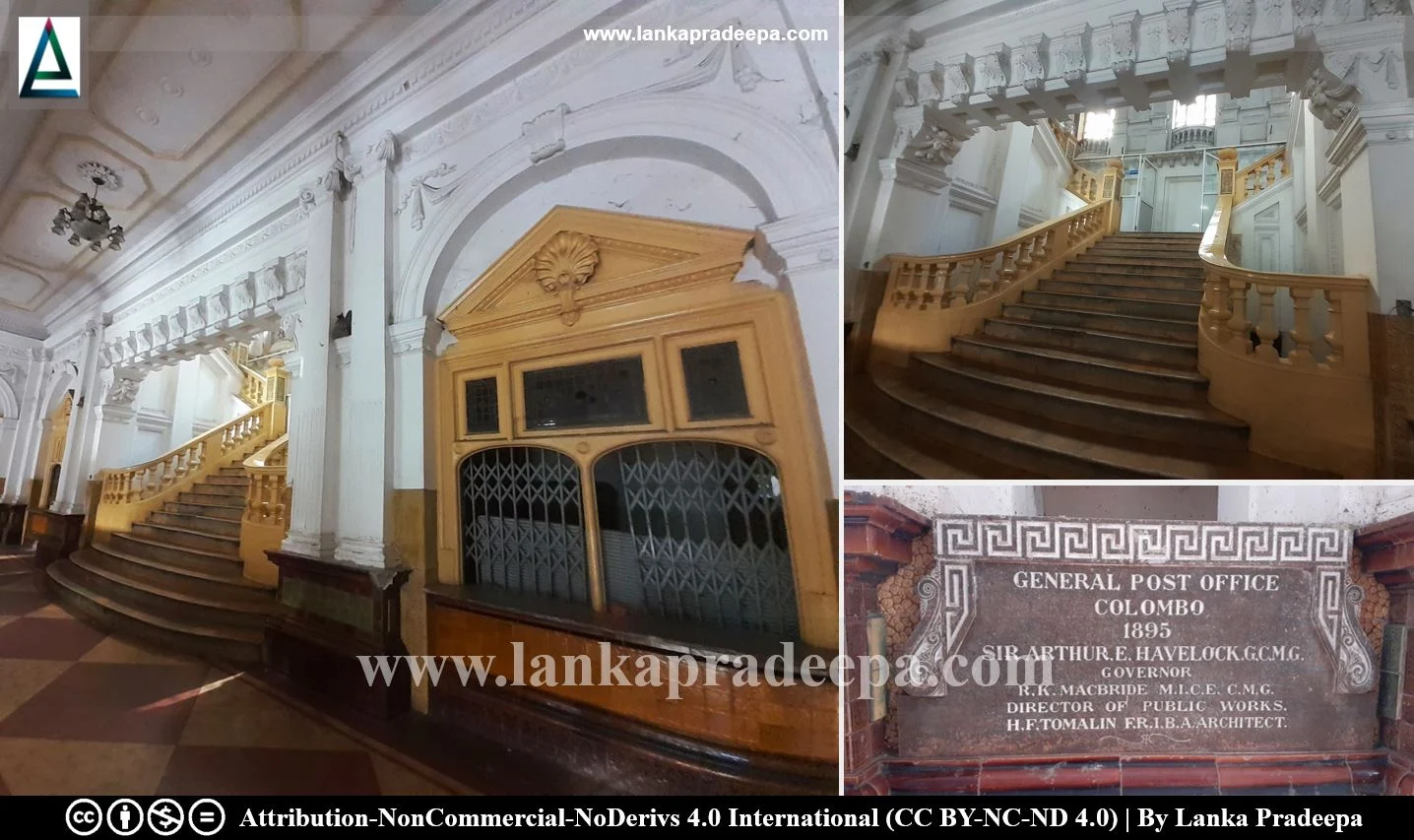
The Old General Post Office Building (Sinhala: කොළඹ පැරණි ප්රධාන තැපැල් කාර්යාල ගොඩනැගිල්ල) is located at No. 15 on Janadhipathi Mawatha, opposite the President's House in Colombo Fort, Sri Lanka. It was the headquarters of the Sri Lanka Post and the office of the Postmaster-General until it was moved out to a new building in 2000 due to security reasons.
History
This building was designed by Herbert Frederick Tomalin, the architect of the Public Works Department and constructed by Avasi Marikar Wapchi Marikar during the period 1891-1895 (Manathunga, 2016; Rajapakshe et al., 2018; Wright, 1999; Welandawe, H., Weerasinghe, J., 2016). The completed building was declared open by Arthur Elibank Havelock, the then British Governor of Ceylon from 1890-1895 (Manathunga, 2016; Rajapakshe et al., 2018). The memorial plaque fixed onto the building can be read as follows;
General Post Office Colombo 1895
Sir Arthur E. Havelock G.C.M.G. Governor
R.K. Macbride M.I.C.E. C.M.G. Director of Public Works
H.F. Tomalin F.R.I.B.A. Architect
The building
The Building is designed in the Renaissance Classical tradition (Welandawe & Weerasinghe, 2016). Constructed on a raised platform, the building can be entered through a wide flight of steps leading to four arch-shaped entrances. The Corinthian, Ionic and Doric pillars with various mouldings and decorations have given a majestic appearance to the facade of the building (Rajapakshe et al., 2018).
A protected monument
The old building called the General Post Office (G.P.O.), situated on Janadhipathi Mawatha Street in Colombo Fort in the Divisional Secretary’s
Division of Colombo is an archaeological protected monument,
declared by a government gazette notification published on 21 January 2000.


 .
.See also
Attribution
References
1) Manathunga, S. B., 2016. Pauranika Sthana Saha Smaraka: Kolamba Distrikkaya (In Sinhala). Department of Archaeology (Sri Lanka). ISBN: 955-9159-39-9. pp.22-23.
2) Rajapakshe, S.; Bandara, T. M. C.; Vanninayake, R. M. B. T. A. B. (Editors), 2018. Puravidya Sthana Namavaliya: Kolamba Distrikkaya (In Sinhala). Vol. I. Department of Archaeology (Sri Lanka). ISBN: 978-955-7457-19-2. p.25.
3) The Gazette of the Democratic Socialist Republic of Sri Lanka. No: 1116. 21 January 2000.
4) Welandawe, H., Weerasinghe, J., 2016. Urban Heritage in the Western Region Megapolis Planning Project. p.17.
2) Rajapakshe, S.; Bandara, T. M. C.; Vanninayake, R. M. B. T. A. B. (Editors), 2018. Puravidya Sthana Namavaliya: Kolamba Distrikkaya (In Sinhala). Vol. I. Department of Archaeology (Sri Lanka). ISBN: 978-955-7457-19-2. p.25.
3) The Gazette of the Democratic Socialist Republic of Sri Lanka. No: 1116. 21 January 2000.
4) Welandawe, H., Weerasinghe, J., 2016. Urban Heritage in the Western Region Megapolis Planning Project. p.17.
5) Wright, A. ed., 1999. Twentieth Century Impressions of Ceylon: Its
History, People, Commerce, Industries, and Resources (first published in
1907). Asian Educational Services. pp.122.
Location Map
This page was last updated on 21 August 2022

